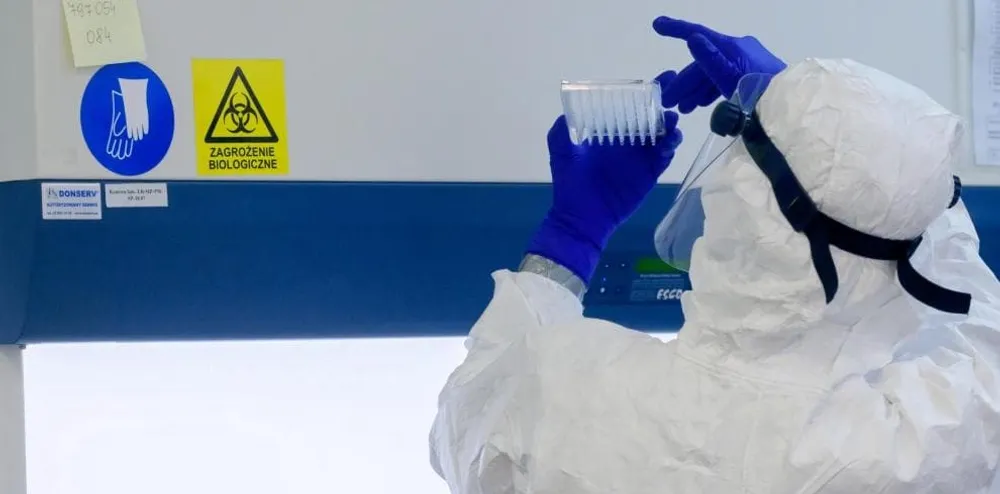
On March 16, the National Institute of Health, NIH, (a division of the US Department of Health and Human Services) began phase 1 of a human RNA vaccine experimentation on humans. The 45 volunteers recruited are adults in good health to which the vaccine was inoculated via intramuscular delivery to test its ability to induce an immune reaction against the virus, assess dosages, and check that is it is safe as to toxicity and tolerability.
It will take about six to eight weeks to process the data and move on to the next phases, but at Moderna they are cautiously optimistic. Everyone here works tirelessly to speed up processes and minimize the time needed for each stage, to get both to an approval of the vaccine, and to administer it to the population.
Head of the research team working at the vaccine at Moderna is Andrea Carfí, Italian by birth, American by adoption. A virus expert, he has been studying viruses since his postdoctoral at the Children's Hospital in Boston, where he worked with important scientists in the field.
After graduating in chemistry in Pavia, Lombardy, where he attended Borromeo College, and getting his doctoral in Grenoble, France, he chose the US and, except for a brief period in Italy, he lived in Cambridge now for eleven years. At Moderna, he heads the infectious diseases research team.
It all began on January 10, 2020, when the Chinese authorities shared the genetic code of a new coronavirus with the scientific community across the world, giving the get-go to the still ongoing challenge.

Were the danger this new virus posed and the need to operate in a completely different way than business as usual immediately apparent to you?
The data about the spread arriving daily from China was extremely alarming. The virus as such, though, was not entirely new. In fact, thanks to previous experiences and the results we obtained in the past with vaccines against other viruses of the same family, such as SARS and MERS, and thanks to the collaboration with the VRC (Vaccine Research Center of the US government), we were very fast at designing the vaccine. In less than three weeks we then began the preclinical studies showing that the vaccine worked in vitro, and started experiments in mice. We were able to send the vaccine to the NIH to begin clinical trials only forty-two days after the release of the genetic sequence.
How did you manage to achieve these results so rapidly?
The use of RNA technology allowed us to move very swiftly. RNA contains the information that allows cells to express a protein of interest, in this case a virus protein, thus allowing to generate an immune response in the person to whom it is injected. A great credit goes to my colleagues in the Technical Development Department who quickly adapted the processes that we use for other applications against infectious diseases to that of vaccines. It was an incredible non-stop extraordinary feat.
Given the emergency, US health authorities allowed you to move to the human clinical trial phase speedily. How is that going?
In this first phase, the goal is to demonstrate that the vaccine is well tolerated and does not cause side effects at increasing dosages. We might also show that the vaccine is immunogenic and produces the effects we are looking for. This is an initial stage before testing the vaccine in a much larger number of people in the studies that will follow. We work with the criteria of optimizing every single second. We assess all possible scenarios in order to be ready to proceed very speedily—all while preserving the safety of the people who are participating in the clinical trials.
To complete all the study and test phases of a new vaccine usually takes years, at least four or five. This time we cannot afford such a long time. When do you think realistically that we will have a vaccine available?
The goal is to start phase 2 now in spring and phase 3 in autumn, to have the vaccine approved in 2021. But given the emergency, authorities might exceptionally authorize that the vaccine be administered even before its final approval, that is, beginning autumn, and only to doctors, nurses and health workers who risk contact with the virus every day, to then move to vaccinate the elderly.
What about the rest of the population?
We work several fronts, including that of a large-scale vaccine production, because we are talking here millions of doses that will need to be produced and administered after its final approval.
In terms of research and testing, how much the vaccine likely cost?
Developing a vaccine is, of course, very costly. You need to go through several stages, and then demonstrating the safety and efficacy of the vaccine involves thousands of people. Typically we talk about several hundred million dollars.
That is a huge amount of money, but nothing compared to the first and foremost human losses and then the economic fallout the whole world is enduring...
The impact of the pandemic is there for all to see, first of all in terms of human suffering, of losses of lives, of a tremendous stress on health systems. There are other aspects besides the health related ones. The costs are massive from any point of view. Therapeutic approaches can certainly alleviate the illness if it is detected timely, but the history of infectious diseases shows that vaccines are the most effective and safest approach to defeat a virus, stop a pandemic, and avoid falling back into the same situation in the future. What happened in Italy, and what is happening in many other countries these days, teaches us that we must work, and invest in order to be prepared as much as possible for new epidemics, that a great effort is needed to prevent and control viruses and spreads, and that we need to set up systems that are capable of reacting and responding promptly to an emergency. Today we are learning from best practices and also from mistakes, but we must absolutely avoid that we face a similar situation in the future again.
Given the spread of the pandemic, and albeit considering that the curve of the infection and deaths will likely decrease owing to the social distancing and isolation measures adopted , is it reasonable to think that the only way to go back to normality will be a vaccine?
It is always difficult to predict the future, science tries to, but there is no being exact. I personally believe that the vaccine is the most likely solution to the present problem and to future risks. I'm not just thinking about the vaccine we are working on: there will also be others who will contribute to putting an end to this nightmare. The measures of containment and social isolation, if implemented rigorously and with the right timing, can be successful as China and South Korea show—and I hope Italy will too. However, the risk that the virus returns exist, and only a large-scale-administered vaccine can block it permanently.
translation of the text by Marina Parada

